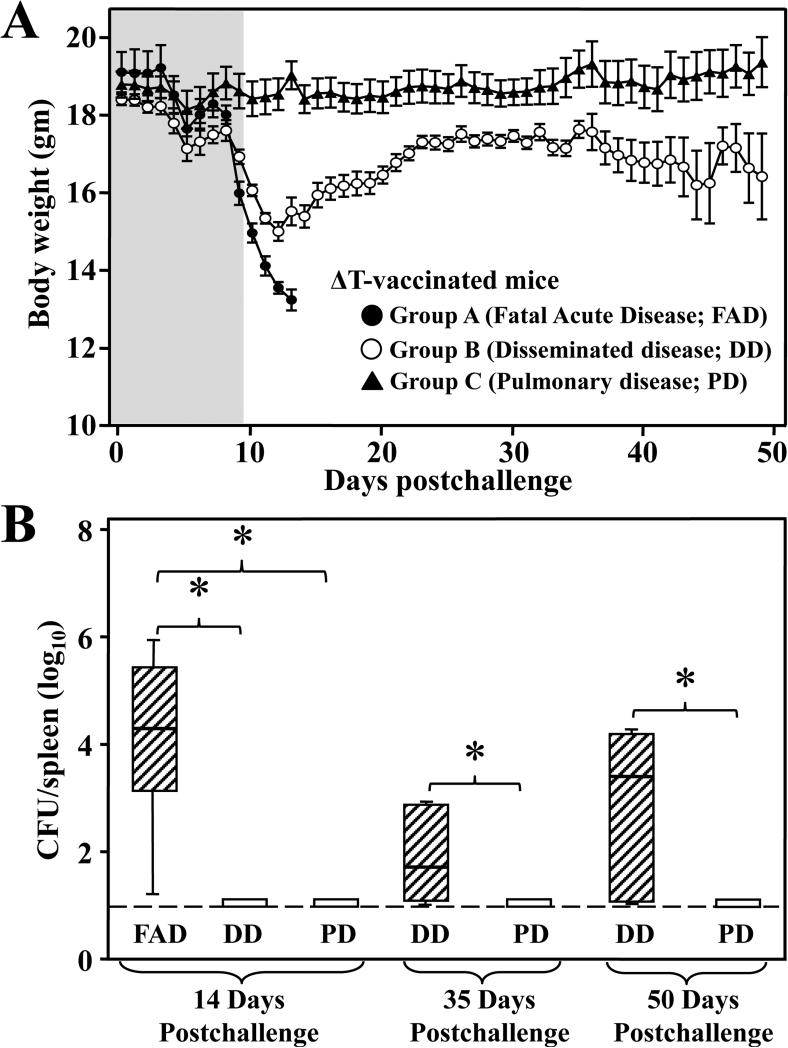FIG. 2. Body weight profiles and fungal burden in spleen of ΔT-vaccinated mice over the course of 50 days postchallenge identified three distinct protective outcomes.
ΔT-vaccinated mice were intranasally challenged with approximate 50-70 spores, a potentially lethal dose and weighed daily for 50 dpc. (A) Individual mice (n = 8-10/group) were assigned to Group A, B, or C based on their profiles of body weight changes after 9 dpc. No significant body weight changes was observed for both the vaccinated and non-vaccinated mice for the first 9 days postchallenge (shaded time period). Data points represent the average daily body weight ± SEM for each disease group. The data presented are representative of three independent experiments. (B) Fungal dissemination from the lungs to the spleen was determined by CFU analysis of the 3 groups at 14, 35, and 50 dpc. Groups A-C were further classified as fetal acute disease (FAD), disseminated disease (DD) and pulmonary disease, respectively, based on mortality and fungal dissemination to spleen.. Asterisks identify statistically significant differences (Mann-Whitney U test, P < 0.01) between the indicated groups, and the dotted line represents the limit of detection.

